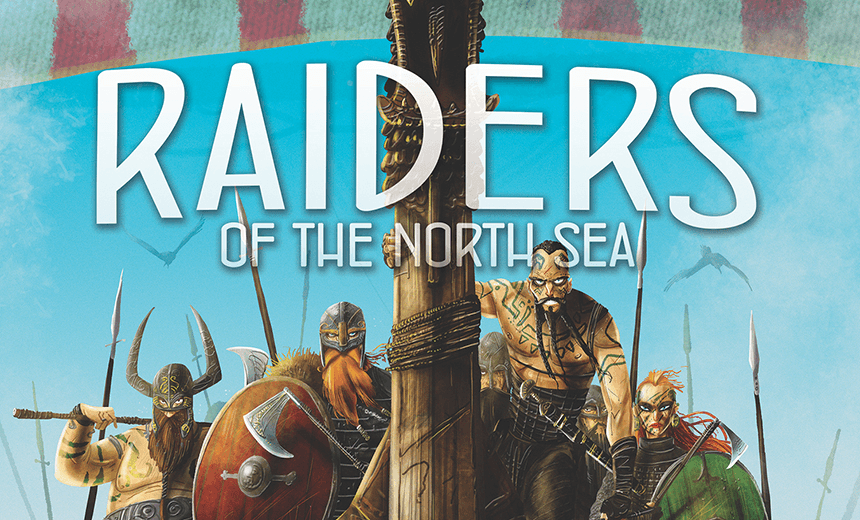Year on year, board games are selling at historical rates – and one Waikanae dad is cashing in. Douglas Moore speaks with Shem Phillips, full-time board game designer and director of Garphill Games.
*
So Shem, could you tell me a little about yourself and how you came to be a designer?
I’m 33, married with two daughters. Since leaving college I’ve done various jobs, working at a McDonald’s and stuff like that. For the past six years I was working as a factory manager for a garment printing company, but at the start of this year I took the leap and went full time with game design and publishing. So far it has paid off pretty well.
When did you start designing?
I’ve been designing for about ten years – the last four years quite seriously. That was about the time Kickstarter came to New Zealand and we put up Shipwrights of the North Sea. After seeing the reaction I thought “Whoa, I can actually make money on these things!” Before that it was more of a hobby.
What was the first game you designed?
It was called Littlewood. It was a very basic roll-and-move exploration game. Very family focused.
What about your company Garphill games?
So I operated under that name since I started publishing, first as a sole trader. Then I established the company when I kicked off Shipwrights. It was mostly set up to release my games under a title. I haven’t published games from anyone else, but it’s something I’m starting to look into.
‘Garphill’ was a shortening of my dad’s name, Gary Phillips. And the logo’s a robin, after my mum’s middle name, because I got into gaming through my family.
Describe a typical day at work.
Currently it’s get up, answer emails. Lots of correspondence comes in overnight. If I’m in a real good design space I’ll get straight into working on a game. Otherwise, it’s take the kids to kindy. Later on is more admin stuff like processing orders. But as for the actual design, it’s quite erratic; just whenever the ideas are flowing really. Otherwise it might be something like making a hundred cards and cutting them out, things like that. It’s like full-time, but not really full-time.
Of the games you’ve designed, what would be your pick of the litter?
I usually get more excited about the most recent one that I’ve done. Of the games I have released, Raiders of the North Sea is the more popular one. It’s the most standout and innovative game that I’ve done. So Raiders and Explorers [of the North Sea] are the ones I like to replay. It was also recently nominated for an award, Die Kennerspiel die Jahre, which I think translates roughly to the ‘connoisseur’s game of the year’. It’s an award targetted at gamers who have played a fair few games.
And the thing is, people see the awards as a buy list. People will just buy it just to have it.
When you go to design a game, do you prefer to start with mechanics or theme?
If I have a choice, probably mechanics. Because you’re less restricted. But I’ve found that starting with theme often gets a better result. That being said, I have done both. It’s a tough one. They really have to support each other. The most recent game, I had a theme. I started working on the mechanics, then I realised they didn’t fit the theme so I changed it. You kind of have to flow with whatever works. I think most games are like that. There was a game I was watching; it started out as a chocolate factory and it ended up being a space game. If you can’t think of a better theme than the one you’ve got, then it’s probably a good sign.
As a designer working out of New Zealand, are there any barriers or hindrances to your craft?
The only hindrance is distance from conventions. Traditionally, you’d have a prototype that you’d take, and you’d book a time with publishers to show them your game. You play through five minutes of it, then you’ll be done. It’s really hard to do that here without spending a lot on travel. That’s why for me using the Kickstarter model is better because I can put out my best possible products on the internet. It bypasses the need to go through a publisher. It’s not for everyone though.
What advice do you have for budding game designers, within New Zealand or out?
A few things. There’s a big design community growing in New Zealand. We have a regular meetup in Wellington and Auckland. If anyone wants to know about that you want to go to gameartisans.nz. There’s always discussion there, and you can ask questions for design or publishing, even Kickstarter. The meetups are a much better environment for feedback. Oftentimes friends and family will just say “It’s great” [but] other designers will give useful and critical feedback. There’s also a bunch of board game conventions that happen. There’s Board Games By the Bay, which happens three times a year up the top of the North Island. There’s WellyCon in Wellington that’s annual, but they have mini-Wellycons too.
Finally, when you are starting out, the first game you make isn’t going to be that good. There are rare cases, maybe, but you can’t write a single song and expect it to be a big hit on the radio. Don’t get too attached to your designs. Keep trying, keep designing new stuff. Don’t be afraid to rip up stuff and try again. That’s huge for any creative pursuit.
This post, like all our gaming content, comes to your peepers only with the support of Bigpipe Broadband.
